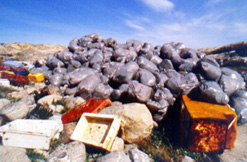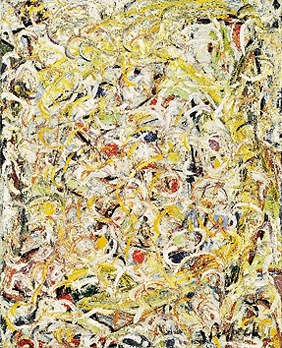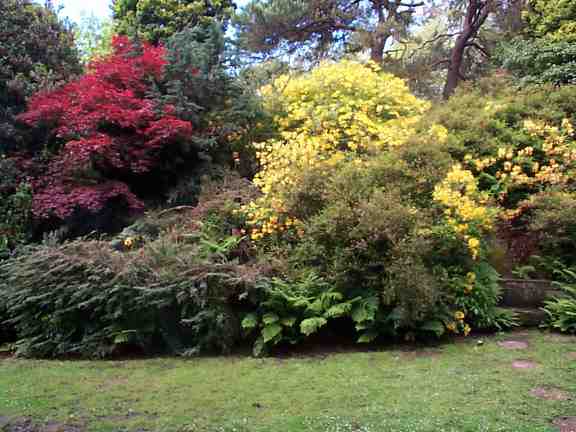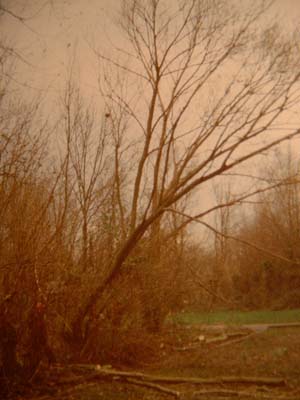
|
|
 |
Locke 4Locke: essences, primary and secondary qualities |
|
Contents |
For Scholastic thinkers, the notion of an essence played a foundational role. In most cases if not in all essence referred to a thing's form, and a thing's form was what made it a thing of a particular sort. - The form of a horse was what made that particular assembly of flesh and bone a horse.
So knowing the essence of a thing was knowing what made it the sort of thing that it was.
Remember also how the Scholastics thought of knowing: knowing a thing was sharing the form (essence) of a thing. Science was thought of as directed at setting out the essences of things.
From the horse's mouth: Locke's Essay Book III Chapter III Sections 15 -20
It was central to the rise of Modern Science that this notion of 'essence' and this notion of what knowledge and science were should be swept away.
Locke says
(a)knowledge is a matter of appreciating the relations between ideas (nothing to do with sharing forms or essences) and that
(b)if you want to talk of essences you can only legitimately mean one of two things:
(i)the sort a thing belongs to (and sorts are human artifacts) or
(ii)the atomic constitution of things.
Locke says: general ideas, derived as I have tried to explain, are one kind of essence - nominal essences.
Let me reprise here the discussion we had last time about general ideas and how they are grounded in experience.
A general idea is (also) a sort.
 |
|
A heap Pic courtesy Global action on Marine Litter |
In forming a general idea by abstracting from a number of particular ideas we are setting up a sort, a category.
Eg when you have a heap of particular ideas of particular tables and you perform the function of abstraction upon them, you discard all the component ideas that are not shared. You are left with those ideas which are shared. It is these that make up the general idea of table. It seems fair to say (in terms that sound perfectly unexceptional) that what you have picked out are what are essential to being a table, having discarded all the inessentials.
What you are picking out as you 'abstract' are ideas which are essential to the sort of thing you are defining.
| Table is a sort of thing. Lion is a sort of animal. |
Put another way, what you are doing in abstracting a general idea is establishing the definition of a sort.
So Locke can say this:
|
"That then which general words signify is a sort
of things; and each of them does that, by being a sign of an abstract
idea in the mind; to which idea, as things existing are found to agree,
so they come to be ranked under that name, or, which is all one, be of
that sort. Whereby it is evident that the essences of the sorts ... are
nothing else but these abstract ideas ... From whence it is easy to observe,
that the essences of the sorts of things, and, consequently, the sorting
of things, is the workmanship of the understanding that abstracts and
makes those general ideas." |
|
"What do we mean by a 'sort' ? Locke explains that he uses this term instead of the more pedantic 'species' and 'genus' of the schools. A sort, he thinks, is suggested by experience but not discovered in it, and the difference is important ..." - Commentary on Locke by R.I.Aaron. More... |
Notice the last sentence of the quotation: human beings set up the sorts that there are.
Can the understanding then set up whatever sorts it chooses?
We said before: No. The understanding, according to Locke's account, is limited by the make-up of its complex ideas: and it can only create a general idea where it finds a set of particular ideas with some components in common. And this is governed by the qualities of things it has encountered through experience.
I have explained what Locke calls a 'nominal essence': it is a general idea.
But he thinks there is another type of essence.
Locke thinks there is something in a thing which gives rise to the qualities we perceive it to have.
|
'[T]he real internal, but generally (in substances) unknown constitution
of things, whereon their discoverable qualities depend, may be called
their [real] essence ... and in this sense we speak of the essence of
particular things.' |
He thinks of this constitution as the thing's corpuscular composition.
The rational person looks
|
'on all natural things to have a real, but unknown, constitution
of their insensible parts; from which flow those sensible qualities which
serve us to distinguish them one from another, according as we have occasion
to rank them into sorts, under common denominations.' |
What Locke is doing therefore is building a picture which supports the corpuscularian
world-view. The objects in the physical universe are made up of particles, which
are too small to be seen, and it is the shape of these component particles,
and their configuration, and their motion, and their size, which endows each
thing with its qualities. We perceive objects made up of these small particles,
and in doing so form ideas of objects' qualities. We allocate each object to
a category in virtue of any agreement we can establish between the particular
idea we have of it and the other ideas, particular and general, that we already
have.
The category we allocate it to is its 'nominal essence'. Its corpuscular constitution is its 'real essence'.
| Animation courtesy Stefano Marchesini |
Locke thinks we cannot gain any knowledge, properly so called, of the corpuscular constitution of things.
How does the real essence relate to the idea of substance which is a component of our various ideas of particular things?
Locke thinks sets of ideas of sense often go together. He thinks this suggests that out there in the physical world sets of qualities go together - a given collection of qualities occurring again and again, maybe with minor variations. And he thinks it safe to infer that this is because one and the same pattern of corpuscles occurs again and again. The corpuscles are too small to be seen and we can't find out anything for sure about them. But he doesn't rule out our forming reasonably well-founded beliefs about them.
These configurations of corpuscles Locke calles the 'real' essences of things. The real essence of this particular table is the set of corpuscles that make it up, configured as they are.
|
Here is my attempt to say how Locke's discussion of essences relates - revolutionises - the Scholastic conception of 'essence': For the medievals the essence of a thing is (standardly) its form. For Locke when you ask about the essence of a thing you may be talking about (1) the sort of thing that it is. For the Scholastics, this would be asking for its form. But for Locke, sorts of things are 'the workmanship of the understanding' and you are asking about something that is constructed by the mind. You are asking what abstract term the thing falls under. Or (2) you may be asking for details of the atomic constitution of the thing. This is not now an enquiry that involves words or sorts - it is just about the thing and its constitution. For the Scholastics asking about the sort of thing a thing belonged to was asking about the form of the thing. And asking about the 'internal constitution', insofar as it made sense, was asking about the form: what organisation does the matter here fall into? |

Jackson Pollack: Shimmering Substance Pic courtesy Museum of Modern Art, New York |
From the horse's mouth: Locke's Essay Book II, Chapter VIII, Sections 7-26.
There is another respect in which Locke helped establish our Modern scientific view: he articulated and defended a distinction between primary and secondary qualities.
Here is Locke expounding it:
|
"Qualities thus considered in bodies are: |
First notice that ideas are to be distinguished from qualities.
A quality is a power. It is the power a thing has to give rise to an idea in our mind.
There are two sorts of qualities: primary and secondary.
A primary quality gives rise to an idea which resembles it. Secondary qualities give rise to ideas, but the ideas are not 'like' the qualities that give rise to them.
Think for example, the particular taste which you get when you take sugar. The taste is an idea. But what type of feature is it that gives rise to that idea?
| Introductory words on taste. |
Locke followed the new science in thinking that taste was produced by the shape and size configuration of the particles of which the sugar was made. He didn't have (I don't think) a specific account, but he thought that when we had acquired one, through research, it would have the general form of explaining taste in terms of the basic properties of particles - their shape, their size, their configuration.
There was, he held, nothing like taste actually in the sugar itself: there was only a collection of particles, each with a shape, each with a size, with the collection organised in a particular way. It was these features of the particles that made a thing up which gave rise to the taste sensation we experience when we put the sugar in our mouths.
Compare that to the idea we have of motion.
We look at a moving body and that gives rise in us to the idea of motion.
In this case Locke holds the body we are looking at has a property which is like the idea it gives rise to. The body is moving. The idea it gives rise to is the idea of motion.
Motion thus qualifies as a primary quality.
A secondary quality is a quality which gives rise to an idea which does not resemble it.
Let us list some primary qualities, and some secondary ones.
| PRIMARY | SECONDARY |
| motion | smell |
| shape | roughness |
| extension | shininess |
| mass | sound |
Remember the idea of atomism (or corpuscularianism):
The phenomena of the natural world are to be explained by thinking of that world as made up of small particles, each particle having a limited number of properties. It was these particles, with their properties and in various configurations which produced everything that we could see about us.
You can understand how big things like tables can be thought of as made up of many smaller things grouped together. This is part of corpuscularianism. But a second part is that some of the properties of the big things are to be explained in terms of a simpler set of properties of the elementary things. The elementary things have a limited number of elementary properties. It is part of corpuscularianism that all the properties of the big things are to be explained in terms of the elementary properties of the elementary things.
What are these elementary properties?
and :
"[D]ivision ... can never take away either solidity, extension, figure,
and mobility."
Essay, Bk II, Ch. VIII, Section
9.
- a peculiar list, you may think. But still, the basic idea is there.
Locke says that primary qualities are really in the bodies that have them, whereas secondary qualities are not.

Again, this may seem a peculiar way of putting the point. Nevertheless it is a point that is still with us I think.
It is perhaps best seen as a point about the scientific world view that Locke
was helping to form. A world view that 'privileges' some features of the world
at the expense of others - ? It would make the world out to be, in itself, a
severe and forbidding construction: just atoms moving about, with nothing but
size, shape, solidity and motion. Most of the things which give human beings
pleasure are not there in reality, but somehow constructed by human beings themselves:
colours, smells, sounds, tastes. (Though I have to agree shape and motion can
in context be very important.)
| Comment by Alfred North Whitehead, thanks to Jenny Tyler, 2004 |
 |
|
This is a much duller picture if the colours are reduced (as my computer thinks of it, anyhow) to two. How much duller if they are eliminated altogether? |
| A.Vanilla | B. the category 'badger' | ||
| C. The structure of corpuscules that allegedly makes up a chair | D. Boddington's | ||
| A. A badger | B. The extra component that makes a set of properties a thing | ||
|
C. The stuff of which the universe is allegedly made
|
D. The idea of a thing that is not dependent on anything else | ||
| A. the sweetness of an apricot | B. the song of a thrush | ||
| C. the roundness of the moon | D. the smell of a badger | ||
| A. The noise, just like the tree itself, doesn't exist in any meaningful way when absolutely nothing is hearing or perceiving it. |
B. It makes the same sound as one hand clapping. |
||
| C. When the tree falls it causes vibrations in the air, but in the absence of a perceiver they don't get converted into an experience of sound. | D. Even if there are no human beings around there is likely to be some living thing in the vicinity - eg a badger. | Ask a friend | |

End
 |
||
| Last revised 03:01:05 |
||
| A module of the BA Philosophy programme Institute of Environment Philosophy and Public Policy | Lancaster University | e-mail philosophy@lancaster.ac.uk |